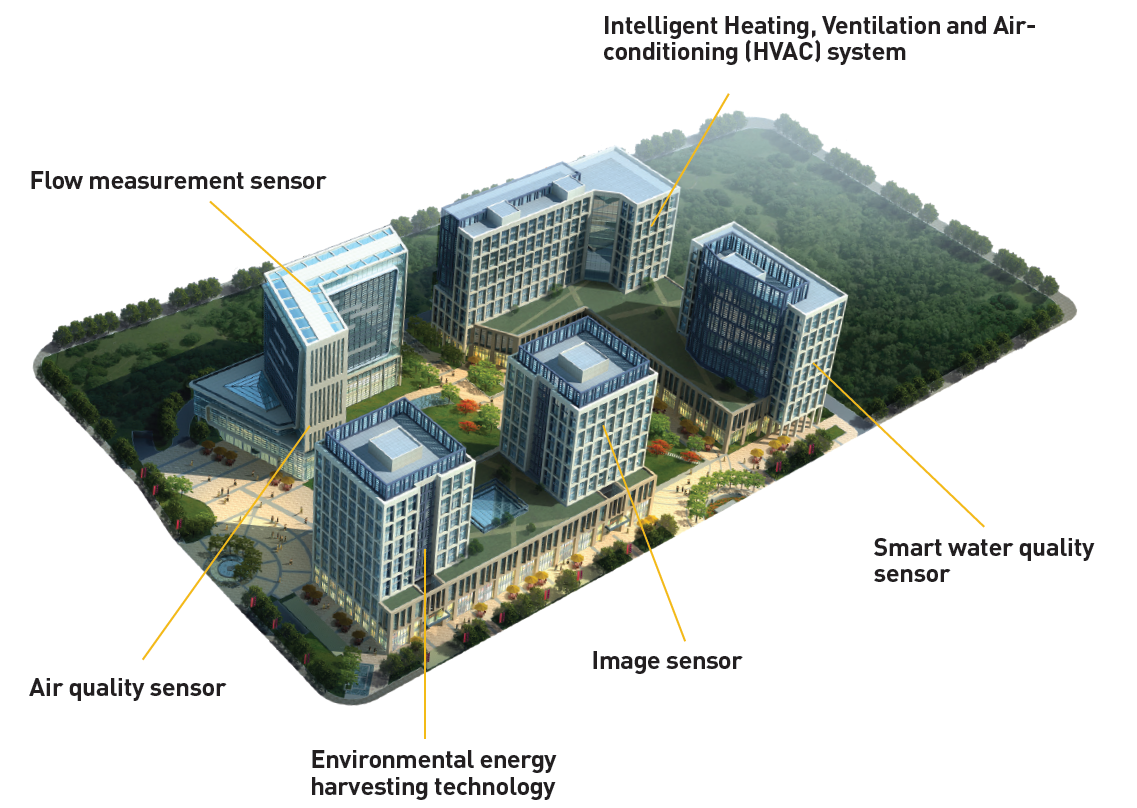Smart Buildings Re-imagined

Hong Kong currently has the world’s second greatest carbon footprint per capita, with functioning buildings accounting for over half of its total energy consumption and using 90% of the city’s electricity. In a bid to cut down on energy usage at source, transforming conventional buildings is key.
Imagine smart buildings that can auto-adjust room temperatures, detect any emission of dangerous gases and also alert managers or owners ahead of a hazardous build-up; as well as being fitted with low-power, high-performance air-conditioning to monitor energy consumption while still achieving thermal comfort. Two projects under the HKUST-MIT Research Alliance Consortium aim to achieve just that.
In the first project, coordinated by electronic and computer engineer Prof Chi Ying Tsui, a next-generation series of low-power cost-effective sensors for measuring and analyzing images, air and water quality, temperature, humidity, and thermal insulation, is being developed. The multi-sensing device is armed with novel energy harvesting and power management technologies, enabling it to power itself autonomously. In particular, the key innovation lies in the new multiple-input, multiple-output (MIMOs) power management architecture that maximizes energy extraction and conversion. Meanwhile, intelligent circuits have been designed to ensure the solar cells are operating in conditions that will maximize their power and reduce losses during conversion from solar to electrical power.
In the second project, coordinated by mechanical engineering specialist Prof Yi-Kuen Lee, an intelligent heating, ventilation and air-conditioning (HVAC) system is being developed to reduce carbon footprint in indoor environments. To achieve this, Prof Lee focuses on developing novel micro-electromechanical (MEMS) flow sensors. The particular aim is to create low-cost micro sensors of energy that can be deployed in each room, or different zones of buildings, providing a more detailed breakdown of energy consumption down to monthly, daily or even hourly intervals to help buildings achieve greater energy efficiency. His innovative system-on-chip design contains a compact complementary metal-oxide-semiconductor (CMOS) thermal flow sensor to innovatively measure air velocity in two dimensions. The integrated design can significantly improve flow measurement accuracy, and provide a much quicker way to analyze sensitivity and power consumption to optimize devices and microsystem integration.
In the long run, such breakthroughs can help reduce energy wastage in places like Hong Kong, where air-conditioning in high-rise buildings accounts for around 30% of its total energy consumption. Both projects are also using the city as a platform to showcase the beneficial implications of their advances to the world.
Prof Chi Ying Tsui of Department of Electronic and Computer Engineering is also Head and Professor of the Division of Integrative Systems and Design. Prof Yi-Kuen Lee is Associate Professor at the Departments of Mechanical and Aerospace Engineering as well as Chemical and Biological Engineering. He is also Associate Director of the Center of Integrated Micro Systems as well as Nanosystem Fabrication Facility at HKUST.